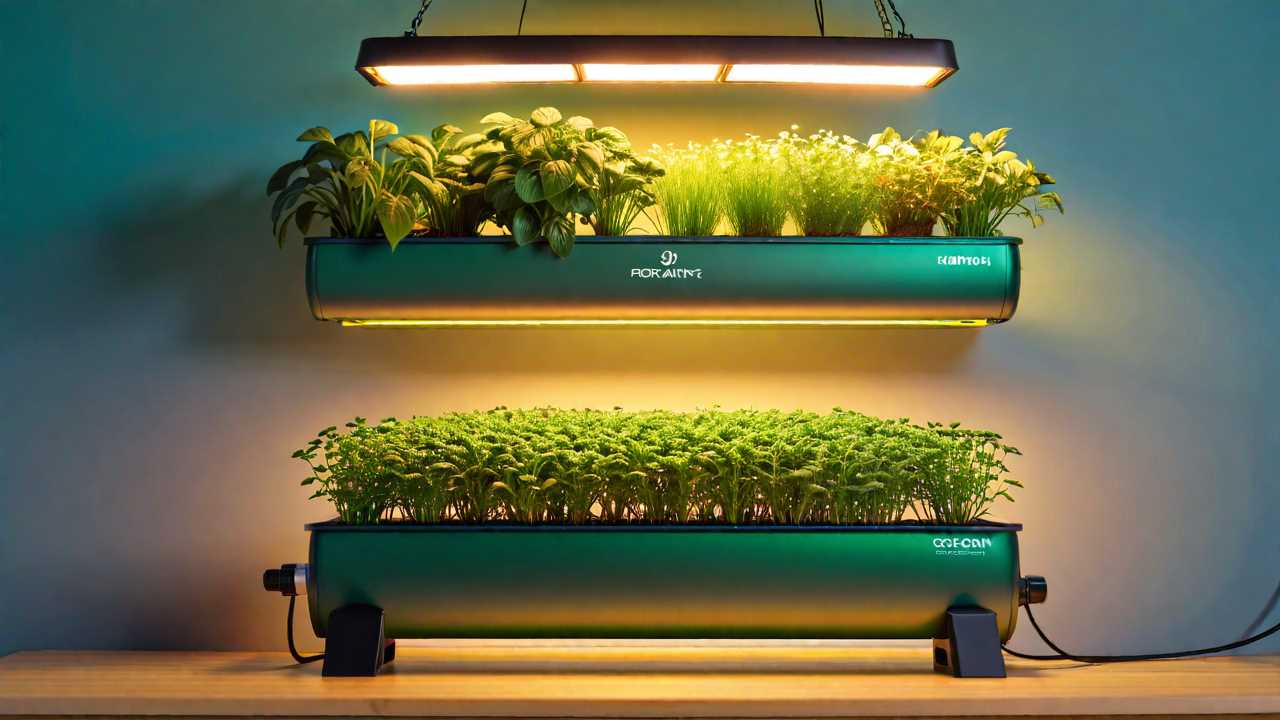
Do you know that with hydroponics, you can cultivate plants at home without soil, using only water and nutrient solutions? This innovative method offers numerous benefits, but have you ever wondered how it actually works and why it's gaining popularity among home gardeners? Let's delve into the intriguing world of hydroponic gardening and uncover the secrets behind its success.
Benefits of Hydroponics at Home
When starting a home hydroponics system, you'll immediately experience the benefits of efficient nutrient absorption and accelerated plant growth compared to traditional soil gardening methods. In hydroponics, plants receive nutrients directly in water, allowing them to intake essential elements more effectively. This targeted delivery system guarantees that plants get precisely what they need, when they need it, fostering robust growth. Without the need to search through soil for nutrients, plants can dedicate more energy to development, resulting in quicker maturation and higher yields.
Another advantage of home hydroponics is water conservation. Hydroponic systems use up to 90% less water than soil-based gardening, as water is recirculated and not lost through drainage or evaporation. This efficiency not only benefits the environment but also helps you save on water bills in the long run.
Furthermore, hydroponic gardening eliminates the risk of soil-borne diseases, pests, and weeds that often plague traditional gardening. By growing plants in a controlled environment, you can safeguard them from external threats, ensuring healthier and more predictable harvests.
Different Hydroponic Systems Explained
Exploring hydroponics further, different hydroponic systems offer various methods for cultivating plants without soil, each with its unique advantages and considerations.
The Wick System is one of the simplest, where a wick transports nutrients from a reservoir to the plant roots.
Water Culture, on the other hand, suspends plants over a nutrient solution, providing oxygen directly to the roots.
Nutrient Film Technique involves a constant flow of nutrient solution over plant roots, ensuring they stay moist.
In the Drip System, a timer-controlled pump delivers nutrients to the base of each plant through a network of tubes.
Ebb and Flow, also known as Flood and Drain, floods the plant roots periodically before draining the solution back into a reservoir.
Finally, the Aeroponic System mists plant roots with a nutrient solution, allowing for maximum oxygen absorption.
Each system requires specific monitoring and maintenance to guarantee optimal plant growth, making it essential to choose the one that aligns best with your gardening goals.
Key Components for Home Hydroponic Setup
To set up a home hydroponic system effectively, you'll need several key components that play essential roles in supporting plant growth and nutrient delivery.
The first critical component is a reservoir where the nutrient solution is stored. This reservoir should be lightproof to prevent algae growth and equipped with an aerator to oxygenate the solution.
Next, you'll require a submersible water pump that helps circulate the nutrient solution through the system, delivering essential nutrients to the plant roots.
A timer is also important to automate the watering cycles, ensuring your plants receive water at regular intervals.
Additionally, you'll need a growing medium such as rockwool, perlite, or clay pellets to support plant roots and provide stability.
Finally, a pH testing kit and nutrient solution are essential for monitoring and adjusting the pH levels of the nutrient solution to maintain efficient nutrient uptake by the plants.
These key components form the foundation of a successful home hydroponic setup, promoting healthy plant growth and maximizing yields.
Steps to Start Hydroponic Gardening
Begin your hydroponic gardening journey by selecting a suitable location with access to natural light or artificial grow lights for best plant growth. Once you have chosen your space, the next step is to set up your hydroponic system.
First, assemble all the necessary components such as a reservoir, a pump for nutrient distribution, growing trays, and growing medium. After setting up the system, fill the reservoir with water and add the appropriate hydroponic nutrient solution according to the manufacturer's instructions.
Next, decide on the plants you want to grow hydroponically. Some popular options include lettuce, herbs, tomatoes, and peppers. Plant your chosen seeds or seedlings into the growing medium within the growing trays. Make sure that the plants are adequately supported and have access to the nutrient solution.
Monitor the water levels, pH levels, and nutrient concentrations regularly to maintain ideal growing conditions. Adjust these factors as needed to support healthy plant growth. With proper care and attention to detail, you'll soon enjoy the benefits of a thriving hydroponic garden right in your home.
Frequently Asked Questions
Can Hydroponic Systems Be Used Outdoors?
Yes, hydroponic systems can be used outdoors, providing sunlight, adequate temperature control, and protection from harsh weather conditions. Outdoor hydroponics requires careful monitoring of environmental factors to guarantee the best plant growth and health.
Is It Safe to Consume Plants Grown Hydroponically?
Yes, it's safe to consume plants grown hydroponically. By closely monitoring nutrients and light exposure, hydroponic systems produce healthy, pesticide-free crops. Regular testing guarantees plants meet safety standards, making them a nutritious choice for consumption.
How Often Do Nutrient Solutions Need to Be Replaced?
Just like a well-oiled machine needing regular maintenance, nutrient solutions in hydroponics must be replaced every 1-2 weeks to guarantee ideal plant growth. This helps maintain proper nutrient levels essential for healthy plants.
Can I Grow All Types of Plants Hydroponically?
Yes, you can cultivate a wide variety of plants hydroponically. Different systems cater to specific plant needs. With proper adjustments to factors like nutrient levels, pH, and lighting, you can successfully grow diverse plants indoors using hydroponics.
What Are the Common Pests in Hydroponic Gardening?
In hydroponic gardening, common pests include aphids, spider mites, and whiteflies. These tiny foes can wreak havoc on your plants. To combat them, use beneficial insects like ladybugs or employ organic pest control methods.
 SportsHollywoodLifestyleFashionHome & GardenTrendsPrivacy PolicyTerms And Conditions
SportsHollywoodLifestyleFashionHome & GardenTrendsPrivacy PolicyTerms And Conditions
